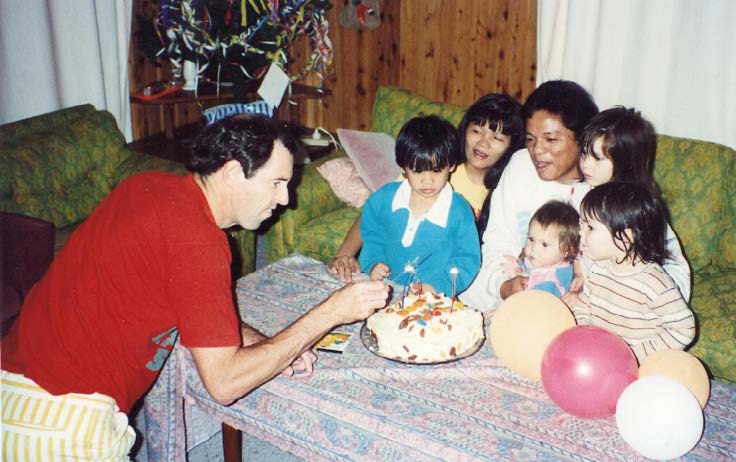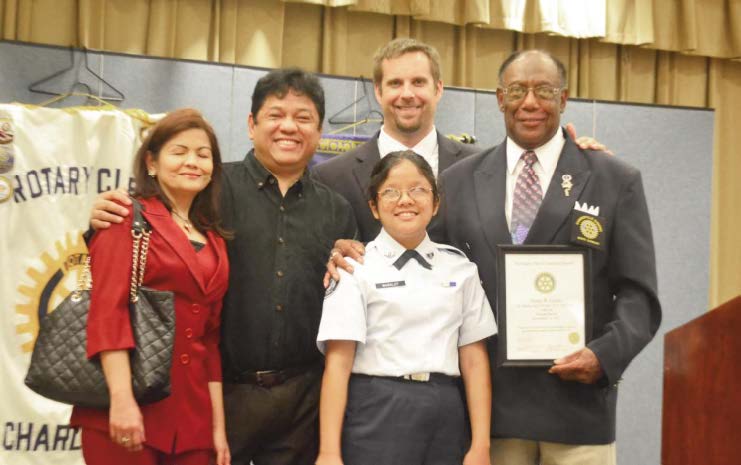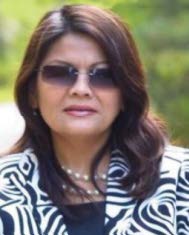CHRISTINA LLANES MABALOT
Now that my baby is graduating from college this May, I am fiercely advocating for the implementation of Early Intervention and for the re-education of society about people with special needs. If mainstream society could label, stereotype and confine a child without special needs unflinchingly, can you imagine what they could do to our children with special needs?
Life begins at conception and so does education. Early Intervention is a crucial part of the life-long process of education that begins from age 0-6 years old, the most formative period of a person's life. It has evolved as a formal discipline to develop children with special needs to their maximum potential with the full support and teamwork of their families, caregivers, communities and the allied medical professionals.
EARLY INTERVENTION 101: THE CALLING
I recognized the importance of early intervention when I was in college. A legally blind student in a regular university without special educational services, I had been relying on my failing residual vision to function. Walking to the bus stop one day, I ran into a pole. The impact was so stunning I almost I passed out. Not knowing what happened, I got up and touched my forehead where it hurt most. I felt the growing bump and I felt like a unicorn! It hurt so bad that I indulged in a pity-party that night.
Then it dawned on me that lately, I could no longer read my handwriting. It always seemed evenings in the classrooms, even during daytime. I couldn't recognize my friends until I heard their voices when they spoke up. I froze at the thought that I was seeing off my residual vision.
I brought myself to switch paradigms and admit my total blindness. I lined up the things I needed to do to finish my college education alive. Most important was to acquire a cane and practice mobility, orientation and learn Braille, which I knew was a foreign language altogether. Overwhelmed by the time and effort I needed to be adept in these skills, I desperately wished I could go back in time to early childhood to start learning them, but I got a reality check.
I could only learn as much and as fast as I could at that point. I thought to myself that this should not happen to other children with special needs. I vowed to myself that I would train children with special needs for the skills they need in life and that they need to start young—so they wouldn't suf fer as I did. As a result, I pursued Special Education as a Master's degree. My vocation was born!
After graduate school, I founded a pre-school that accommodated children with special needs. I searched the community to identify babies and toddlers with special and toddlers with special needs to train their parents and families to provide these children with infant stimulation. This was before the 1990s, the prehigh technology dark ages. I didn't have special equipment nor an organized plan.
What I learned from school I implemented using sheer common sense at that time. My goal for giving early stimulation to these children was to prepare them for inclusion in my pre-school and eventually include them in regular "big" schools, as I called them. I went by the slogan: "Bring out the best in your child."
In the orientation MAKE A WISH: The author celebrating son Paulo's fourth birthday. "I determined to prove that my child did not have ADHD. I labeled my alphabet and number cards with their corresponding Braille symbols and homeschooled my sighted child." sessions, I demonstrated to the families and caregivers that teaching can take place in daily life at home and everywhere. I worked with commonplace things in the family's house: utensils; plates; cups that I clanged to make sounds, and for the kids to stack and sort; fruits for texture, scents and taste; shoe boxes; balls for shapes; strings; beads; backyard implements, and so on. I worked with all kinds of special needs children. I instructed parents and caregivers to support young children to achieve a certain objective or do the tasks at hand. If a kid needed to be carried, they carried them. The number one house rule that I highlighted is that the children should always be affirmed, so that the seed of empowerment could be planted in the babies' heart, for them to gain the confidence to "do." So that, eventually, they'd have the ability to "become."

MAKE A WISH: The author celebrating son Paulo's fourth birthday. "I determined to prove that my child did not have ADHD. I labeled my alphabet and number cards with their corresponding Braille symbols and homeschooled my sighted child."
Likewise, activities at the Center were non-traditional. I re-invented activities for the children to be able to do. Toddlers with special needs relished playing in the sandbox, enjoyed playground equipment, shaped and baked cookie dough and played socialization games. I cared for almost every domesticated animal – dogs, cats, rabbits, chickens, monkeys and guinea pigs for the children to pet.
From experience, I could say that the heart of Early Intervention is cultivating the children's love for learning. I always incorporated learning with the activities the child loved to do. My favorite success story is how a child with autism learned to read. This child could literally live in the playground. It was his safe place. So I held one-on-one reading sessions with him in the playground. Two years later, he would pick up books in the library and read endlessly.
EARLY INTERVENTION 102: A BONA FIDE PRACTICE
One day, the country director for Helen Keller International Philippines and the regional director of the Hilton-Perkins International Program visited the Center and the community. They appreciated my work with young children with special needs and sponsored my formal training in "Early Intervention for the Blind and Multiply- handicapped" at the Perkins School for the Blind in Massachusetts. Thanks to them, my practice was certified, enriched and structured. I went back to the Philippines equipped to empower. My work expanded from directly servicing children to integrating an Early Intervention component into establishments. I conducted training for teachers, community and social workers of institutions for children with special needs, and set up community-based Early Intervention programs. The biggest victory was establishing a center-based program at a regular school wherein the children could be readily mainstreamed after or simultaneous with the Early Intervention program.
One child had a motor impairment. I requested my husband, an engineer by education, to develop adaptive tools for her to be able to write with a pen and go about basic self-help skills. When I thought she was ready for mainstreaming, I, together with her parents, advocated for her to be admitted to a private school in their neighborhood. This child often landed at the top of her class.

ACHIEVER: Jem being presented the Summerville, SC Mayor's Committee Scholarship Award. "Every child is unique and different that raising skills have to evolve out of the specific needs of the particular child. This was the point of a career turning into a lifestyle."
EARLY INTERVENTION 103: A MOTHER WITH VISUAL IMPAIRMENT TEACHING HER CHILD WITHOUT SPECIAL NEEDS
A few years later, I became pregnant with my first child, my son. Although I was concerned about the possibility that my child might inherit my genetic condition, aniridia, I intentionally decided not to stress about it for his sake and even indulged myself in my hobbies and favorite things. Whenever I listened to audiobooks, I held my player next to my tummy for the baby to hear it more clearly. I requested friends who could speak foreign languages to talk to my child. An enjoyable and anxiety-free pregnancy is one of a mother's best gift to her baby in her womb. The child would have gained the raw materials to emotional health. When my sighted child was in prekindergarten, during the first parent teacher conference, his teacher told me that he was not able to learn how to read because he apparently "had ADHD." After my initial shock, I was ready to kill. They were ready to label a child and dismiss him as unteachable. I had flashbacks of those same cultural misperceptions I suffered and had a post-traumatic stress syndrome attack. But I took to "fight" and not to "flight." I determined to prove that my child did not have ADHD. I labeled my alphabet and number cards with their corresponding Braille symbols and homeschooled my sighted child. He was fast learner! He was just so bored in school at that time, so I put him in a non-traditional one.
EARLY INTERVENTION 104: A MOTHER WITH VISUAL IMPAIRMENT TEACHING HER OWN CHILD WITH VISUAL IMPAIRMENT
Seven years later, I gave birth to my second child, a visually-impaired girl. I was devastated! No amount of history, experience, and education is ever enough to prepare for a blind parent to raise a child with special needs. Every child is unique and different that raising skills have to evolve out of the specific needs of the particular child. This was the point of a career turning into a lifestyle.
EARLY INTERVENTION 105: ADVOCACY
Now that my baby is graduating from college this May, I am fiercely advocating for the implementation of Early Intervention and for the re-education of society about people with special needs. If mainstream society could label, stereotype and confine a child without special needs unflinchingly, can you imagine what they could do to our children with special needs?
The good news, however, is that I believe these attitudinal barriers are more the result of ignorance than cruelty. We'll have a greater impact if we also educate the non-disabled within society about our children. If we confront them, we drive them away from our community. But if we educate them by telling our stories, inviting them to the community, and actually sharing information we have in our hands (such as, for example, the link for this digital magazine), we will win them forever.•
HEARTSIGHT Christina Llanes Mabalot is physically blind from aniridia, but has a vision. She enjoys touching people's lives to bring out the best in them. "Heartsight" explains her ability to see with her heart. Christina earned her B.A. degree and Masters in Education from the University of the Philippines, Diliman, specializing in Early Intervention for the Blind. She later received Educational Leadership training through the Hilton-Perkins International Program in Massachusetts, then worked as consultant for programs for the VI Helen Keller International. She has championed Inclusive Education, Early Intervention, Capability Building and Disability Sensitivity programs. She was twice a winner in the International Speech contests of the Toastmasters International (District 75) and has been a professional inspirational and motivational speaker. Christina is blissfully married to Silver Mabalot, also physically impaired, her partner in advancing noble causes. Their children are Paulo and Jem, who has aniridia.
